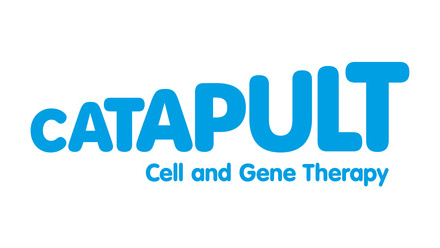Spotlight on VectorBuilder: from one million vectors to clinical innovation

VectorBuilder has produced over one million vectors in just ten years and is helping drive innovation in cell and gene therapy worldwide. In this blog, Alan Griffith, Head of CDMO Global Operations, shares their achievements, priorities, and ambitions as a new member of the BIA community.
Tell us about your company and ambitions
At VectorBuilder, we're proud to be the gene delivery partner of choice for over 50,000 researchers and organisations worldwide – from academic labs to global biotech and pharmaceutical leaders. Our mission is to provide end-to-end solutions for all gene delivery needs, spanning every stage of the journey, from basic research at the bench to clinical applications at the bedside.
Our commitment to innovation, quality, and speed, backed by a PhD-level team with decades of experience, helps the scientists we work with navigate complex projects with confidence. This dedication and desire to be at the forefront of innovation in the Cell and Gene Therapy (CGT) field has earned us thousands of glowing testimonials and frequent citations in high-impact publications.
So, whether you need custom plasmid design, viral vector production, or full-service CRO/CDMO support, VectorBuilder offers true end-to-end solutions for bespoke gene delivery needs; in my opinion, this is what separates us from the competition.
What is your company’s biggest achievement so far?
In the non-clinical space, in barely ten years, we’ve reached the 1 million vector milestone —100,000 vectors made every year on average — and are likely the first CRDMO to do so. We are proud to say that we collaborate with over 4500 clients around the world in academia and industry, and that number is only increasing.
In the clinical space, researchers at VectorBuilder have successfully manufactured and scaled up the world's first treatment of paraplegia. We’ve also collaborated in the development of a treatment for an ultra-rare orphan disease (Menkes), which highlights our altruistic mission to make gene therapy more accessible to everyone.
What are some of the priorities that you’re currently working on?
We’re currently working on a phase-3 HIV vaccine. In addition to that, the development of AAVs targeting Amyotrophic Lateral Sclerosis (ALS) and Parkinson’s Disease occupies a good deal of our current bandwidth. On the organisational front, in addition to expansion to a 500,000 sq ft research and production facility in China, we have a new UK office in London, and we are soon to be bringing our Chicago facility online with an aim to take our renowned customer service to the next level.
What was your motivation behind joining BIA, and what are you looking to achieve?
As a researcher, an ex-BIA member, and a developer, I have been tremendously impressed with what Steven Bates and the BIA team have accomplished over the last few years.
It is an unfortunate reality that clinical candidates in the CGT space are often selected at the proof-of-concept stage based almost solely on their activity and functionality, overlooking critical factors such as manufacturability and immunogenicity – we want to buck the trend here and ensure that clients adequately prepare for the clinic. At VectorBuilder, we have recently launched a new consultancy platform, CliniVec - this service focuses on optimising vector designs specifically for pre-clinical and clinical studies centred around 3 main cornerstones: Manufacturability, Efficacy, and Safety.
In simple terms, the current practice is a bit like very high-risk roulette: you spin the wheel with one vector and hope for the best. CliniVec mitigates this risk by introducing multiple vector candidates at the proof-of-concept stage and dramatically increases your chances of successfully navigating out of the valley of death. For the investors out there, think of a cash runway–this is a vector runway.
We have made a conscious effort to hire ex-developers so that our collaborators can have first-hand, real-life advice and consultation on a successful transition from the lab to the clinic. It is just as important to know what NOT to do as what to do. Custom developability assessments (as evidenced by our one-million-vectors-produced benchmark) play a key role in this process by evaluating the likelihood that a vector can be manufactured to appropriate standards of safety and efficacy.
The beauty of cliniVec is that it will mean something slightly different to every developer because each indicator, each design, each target product profile most likely will be different, even if two developers are targeting the same disease/pathology.
What excites you about the UK life sciences sector?
The UK is punching well above its weight in the CGT space, with world-class academic hubs like University College London, Stevenage, Oxford, Cambridge, King’s College, and innovative clusters like the Golden Triangle. Our talent, both present and incoming, is our ace in the hole and it is important that that talent is nurtured appropriately.
From a more practical perspective, the National Health Service (NHS) is a unique asset. It offers centralised patient records, making the UK a leader in real-world evidence, clinical trial recruitment, and health economics modelling, while initiatives like the Advanced Therapies Treatment Centres (ATTCs) create an integrated pipeline from the design stage to treatment. In addition, we have an increasing number of manufacturing launchpads which are being integrated with continuous and automated systems.
The UK regulatory environment is among the most progressive there is: the Medicines and Healthcare products Regulatory Agency (MHRA) in the UK is now a global leader in accelerated approvals and international harmonisation, having launched a framework for Innovative Licensing and Access Pathway (ILAP) and ECMP (ex vivo cell and gene therapy manufacturing and perfusion) for Advanced Therapy Medicinal Products.
If you could invite any scientist or entrepreneur to dinner, who would it be and why?
It’s not even close: Albert Einstein. Even when he was wrong, he helped define entire sub-genres of physics and decades after his passing, his predictions are still being borne out–the discovery of gravitational waves a century after he predicted their existence comes to mind. Maybe one day he’ll travel to us via an Einstein-Rosen bridge (a “wormhole” for the non-nerds) and tell us how to make gene therapy vectors that might save Schrodinger's cat so we can be in compliance with The 3Rs and Modernisation Act :)







